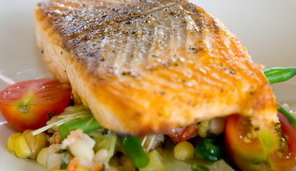Heart Health: A Woman's Guide -- Dean Ornish, MD -- 2/5/2004
 |
|
By Dean Ornish
WebMD Live Events Transcript
Heart disease doesn't get the media attention that many other conditions get, but it's the No. 1 health threat to women, by far. But the good news is, heart disease can be prevented, and even reversed. We discussed women's heart health, including diet, stress, love, and the effects of menopause, with Dean Ornish, MD, on Feb. 5.
Ornish: Many women don't realize that heart disease is as common in women as in men. In fact, heart and blood vessel diseases kill more women than all other diseases COMBINED. That's the bad news.
Women had been told to take HRT (hormone replacement therapy) to reduce the risk of cardiovascular disease even though it was known that it increased the risk of breast cancer and uterine cancer. The rationale was that heart disease was more common, so the net effect would be worth it. Yet most women would be unwilling to trade heart disease for cancer.
Our research and that of others indicates that women can reverse heart disease easier than men, whether through diet and lifestyle or lipid-lowering drugs, or both. Women who undergo revascularization with bypass surgery or angioplasty generally don't do as well as men, so this is yet another reason why women may benefit from diet and lifestyle changes.
And these changes in diet and lifestyle can also help prevent breast cancer, osteoporosis, diabetes, hypertension, arthritis, colon cancer, and obesity, and the only side effects are good ones.
For the complete transcript of Dr Ornish's interview click here.

